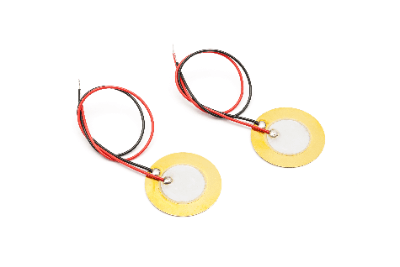What Is a Piezoelectric Device?

A piezoelectric device is a passive device that uses the piezoelectric and inverse piezoelectric effects that occur in dielectric materials such as quartz and quartz to control and detect micro-operation.
Because of their simple structure that does not require gears or motors for operation, piezoelectric elements are smaller than other micro-operation mechanism elements.
Uses of Piezoelectric Devices
Piezoelectric devices are mainly used in devices that detect and control minute movements for industrial applications.
For example, piezoelectric devices are used in vibrometers, where minute changes in force due to vibration are input to the piezoelectric devices as pressure, and the voltage generated in the piezoelectric devices under pressure is output to obtain a voltage value that is quantified as the magnitude of the vibration.
Piezoelectric drives are also used as drive systems accompanying stage movements of equipment such as microscopes and interferometers, which require precise movements.
Piezoelectric devices in such drive systems are called piezoelectric drivers or piezoelectric actuators, and multilayer actuators with multiple piezoelectric devices are also common components. In these devices, minute movements are achieved by applying minute pulse currents to the piezoelectric devices. Piezoelectric devices are suitable for situations that require high responsiveness and precise motion control.
1. Cooling of Electronic Equipment
While DC fans are often used to cool electronic devices such as PCs, cooling methods using piezoelectric devices have also been proposed.
Specifically, the inverse piezoelectric effect of piezoelectric devices is used to generate wind by vibrating a structure consisting of a piezoelectric device and a blade that generates wind.
This cooling method using piezoelectric devices produces less noise than DC fans and can be driven with less energy.
However, when the piezoelectric devices and blades are driven for long periods of time, the piezoelectric devices and blades may become disconnected, so a support plate is installed to disperse the stress on the structure.
2. Power Generation
Power generation systems using piezoelectric devices are also being developed.
For example, the Frontier Service Laboratory of the JR East Research and Development Center has been researching a “floor power generation system” and has been conducting demonstration tests at Tokyo Station since 2006.
Specifically, they are studying a system in which piezoelectric devices are laid out vertically, horizontally, and vertically like a floor, and electricity is generated by the piezoelectric effect when people walk on the floor.
The Frontier Service Laboratory of the JR East Research and Development Center estimates that the amount of electricity generated will be about 10 Wsec for the planned demonstration experiment in 2008-2009.
Thus, although the power generation capacity is not very high and the amount of electricity generated is not commensurate with the cost, and the piezoelectric devices are brittle materials with low durability. Research and development is currently being conducted by various companies and research institutes, and the theme is whether the system can generate electricity to a practical level.
3. Speakers
Speakers using piezoelectric devices have also been developed.
Principle of Piezoelectric Devices
The main material used in piezoelectric devices is piezoelectric ceramics. Piezoelectric materials have polarity, which is an electrical distortion inside the crystal.
Piezoelectric devices consist of a piezoelectric material sandwiched between positive and negative electrodes.
By applying voltage between the electrodes, pressure is applied to the piezoelectric material, which expands or contracts and displaces according to the magnitude of the voltage. This displacement is used as the driving force. In addition, it is also possible to detect voltage by applying pressure that deforms the piezoelectric devices in the opposite direction.
Under normal conditions, the crystal lattice in the piezoelectric body remains electrically stable by taking in ions from the atmosphere. However, when voltage is applied, the balance is easily upset and the polarity within the crystal changes, causing the crystal lattice itself to expand and contract in the direction indicated by the arrow, which is the displacement of the piezoelectric material.
In other words, the displacement of the piezoelectric material is at the level of a few microns at most due to strain deformation using the electronic polarity of the crystal lattice. The driving force of the piezoelectric element itself is generally as small as a few microns.
For this reason, a multilayer actuator consisting of multiple piezoelectric devices is used when an even larger driving force is required.
Other Information on Piezoelectric Devices
1. Principle of a Speaker Using Piezoelectric Devices
This is also based on the piezoelectric effect of piezoelectric devices. Vibrating members are placed in contact with the piezoelectric devices in the direction of expansion and contraction.
When voltage is applied to the piezoelectric devices, the piezoelectric devices expand and contract due to the piezoelectric effect, and the vibrations are transmitted to the vibrating member to reproduce sound.
2. Specific Products
TDK Corporation sells a speaker called PiezoListen™ that uses piezoelectric devices.
The basic structure consists of piezoelectric devices coated with resin film and fitted with a frame and terminals for wiring.
By using piezoelectric devices capable of high displacement, this speaker has increased output in the low frequency range and achieved output over a wide sound range.
In addition, the use of fine ceramics for the piezoelectric devices has made the speaker smaller and thinner.